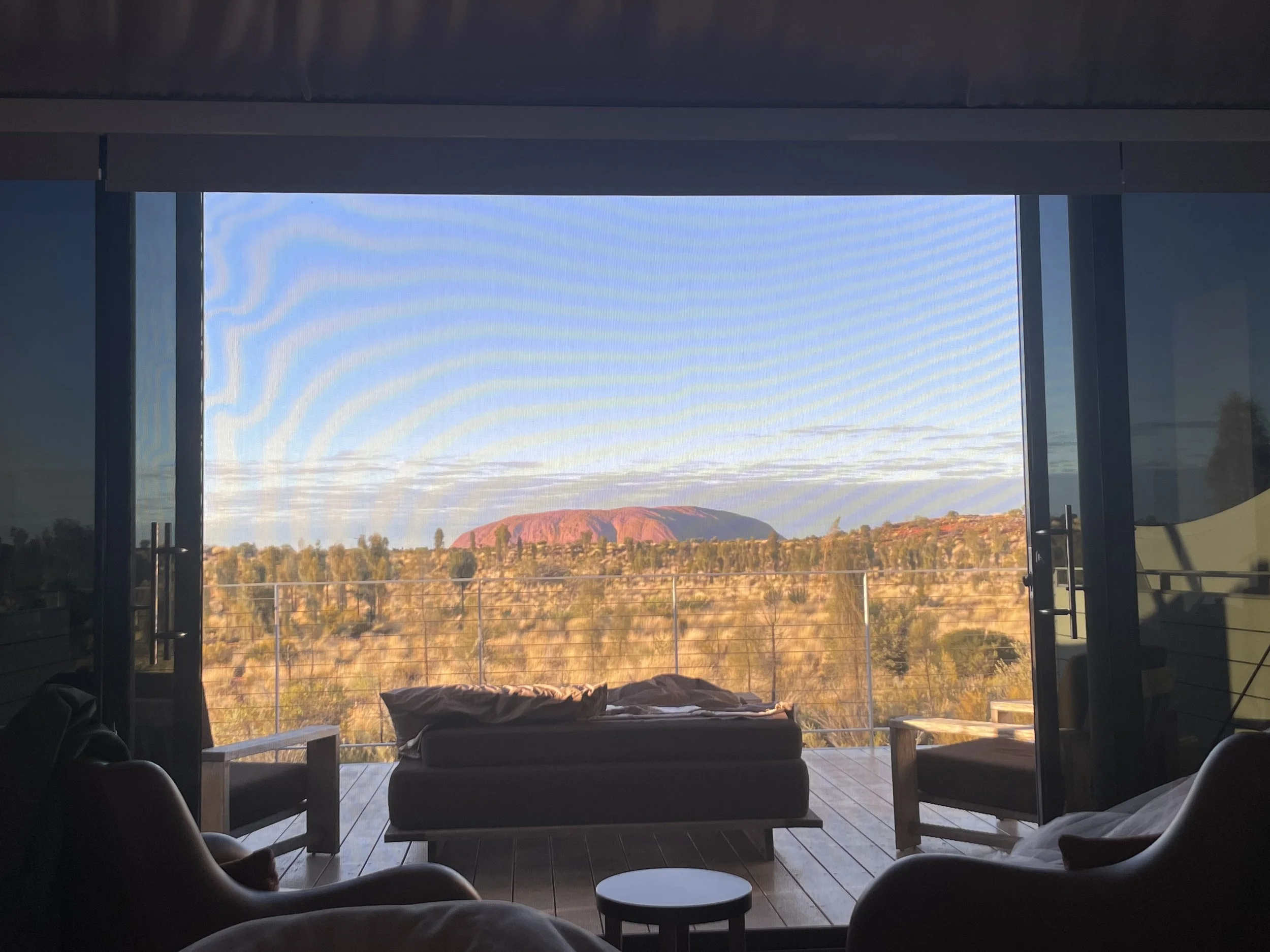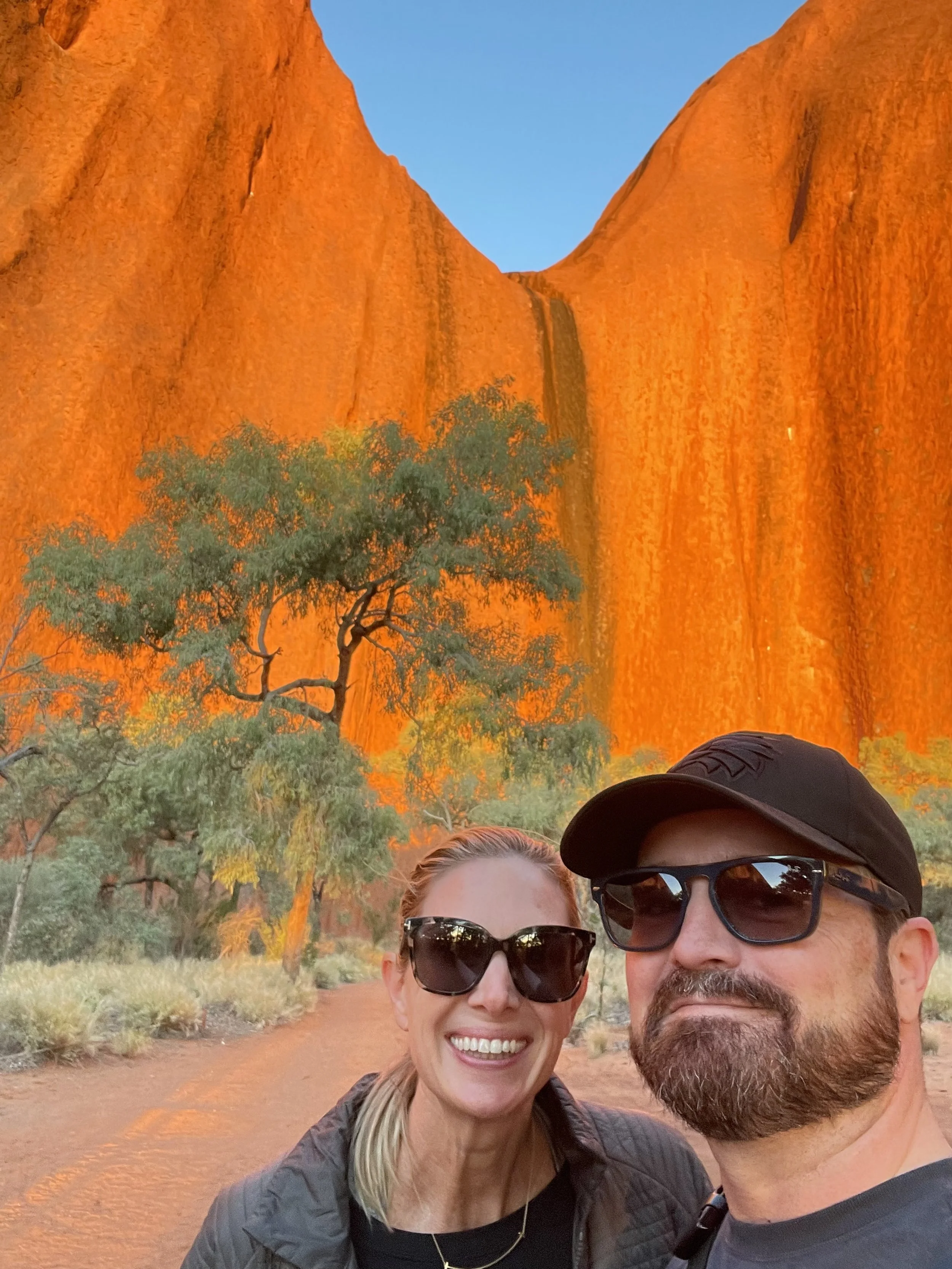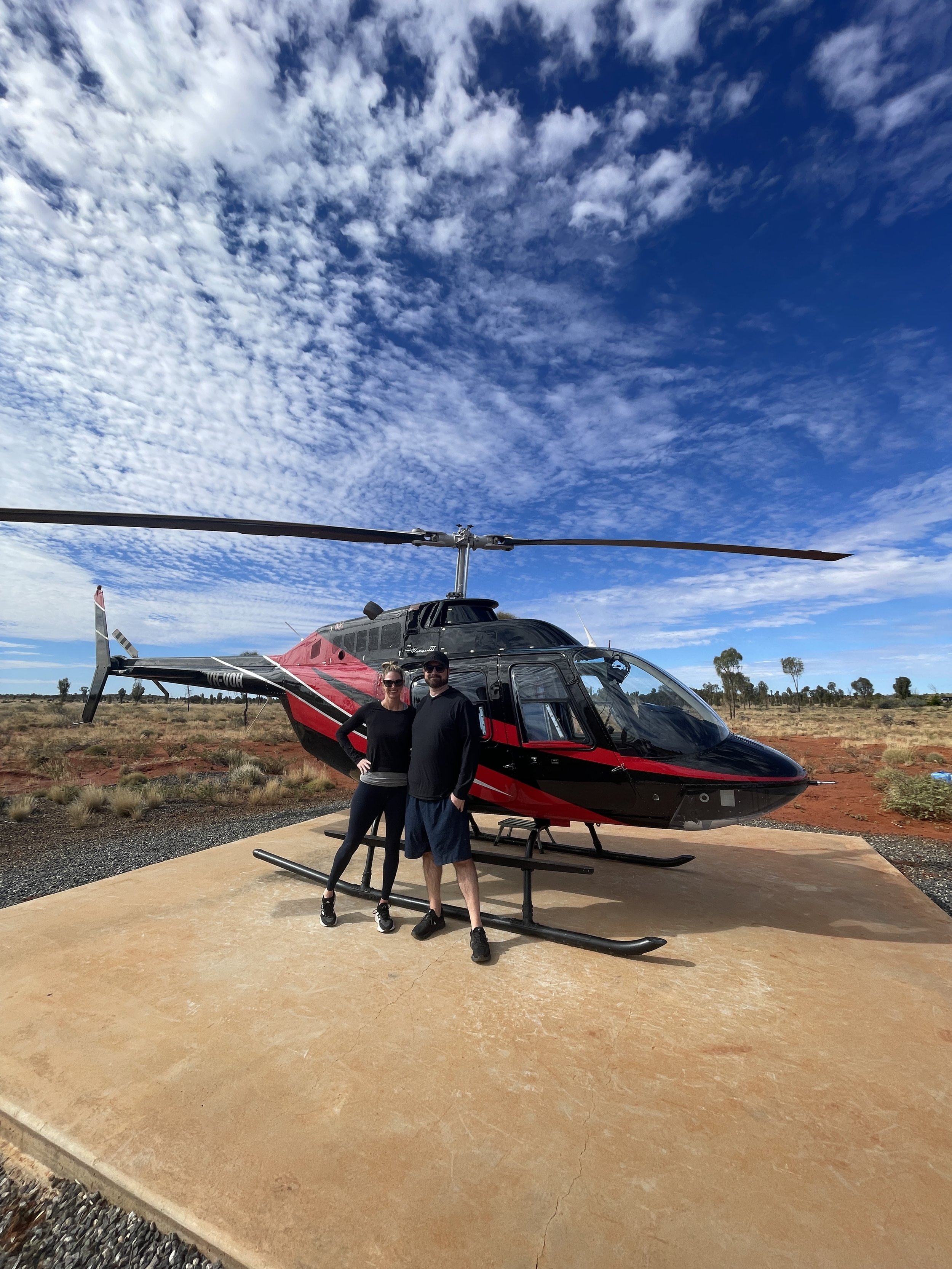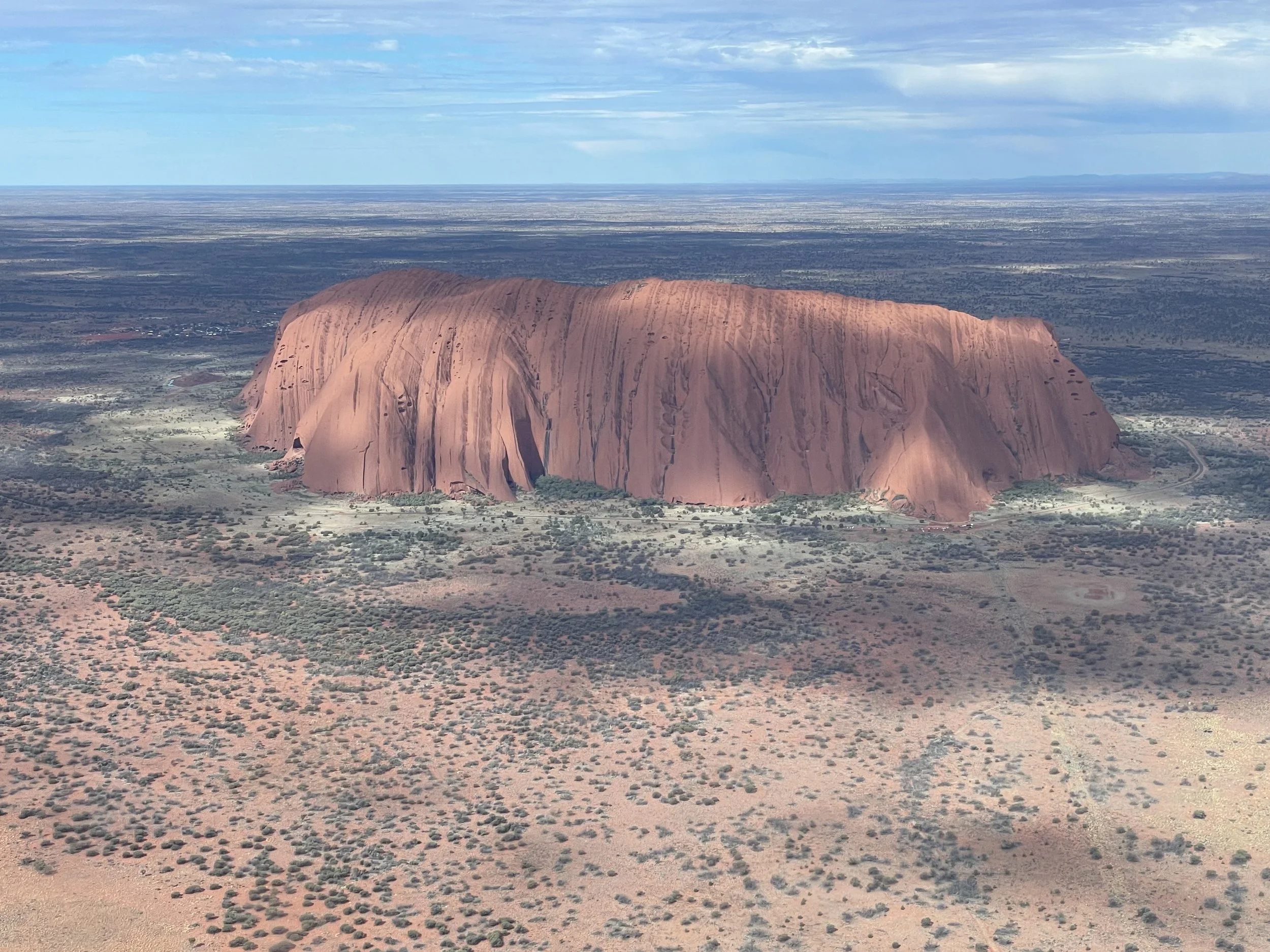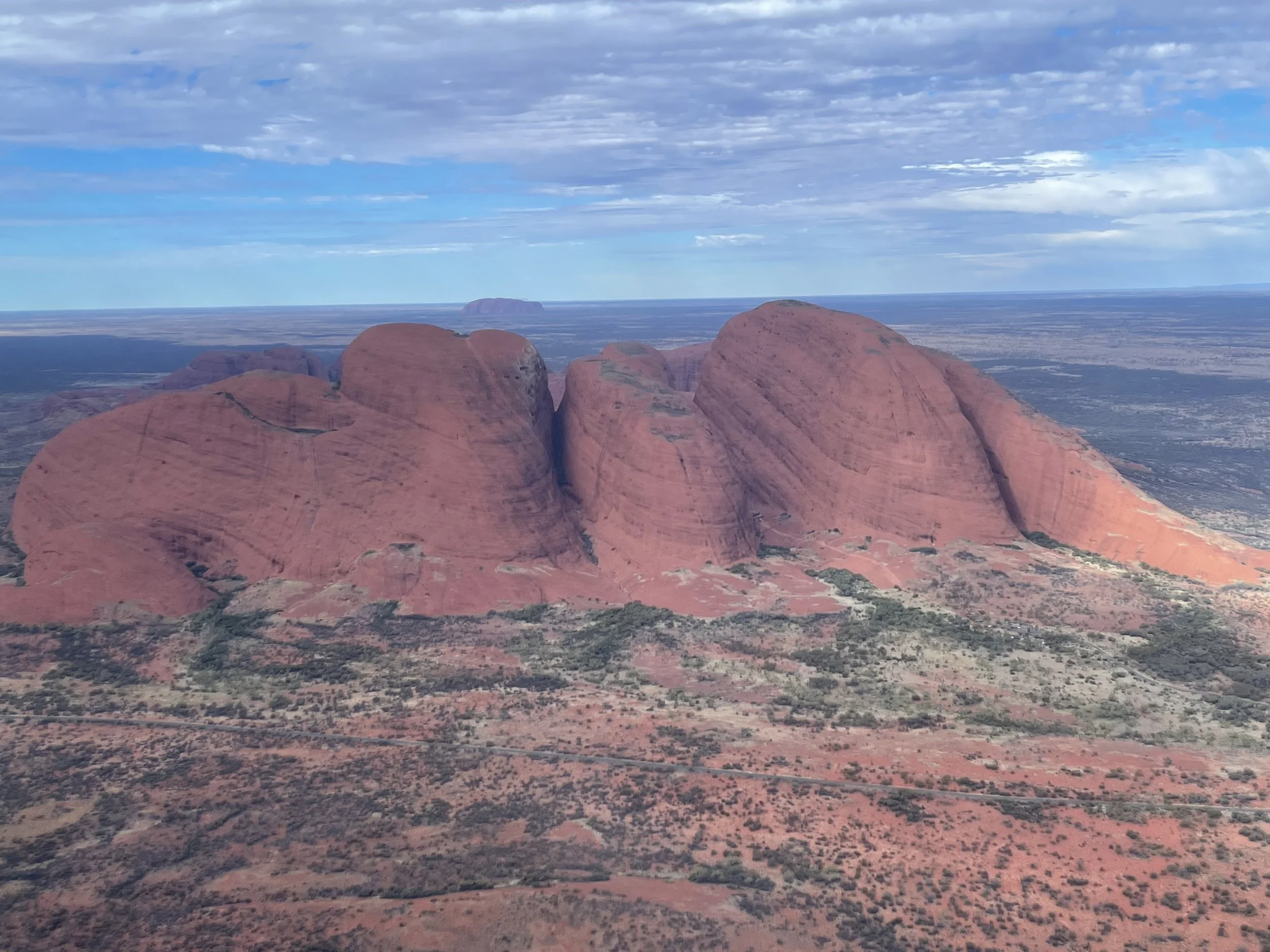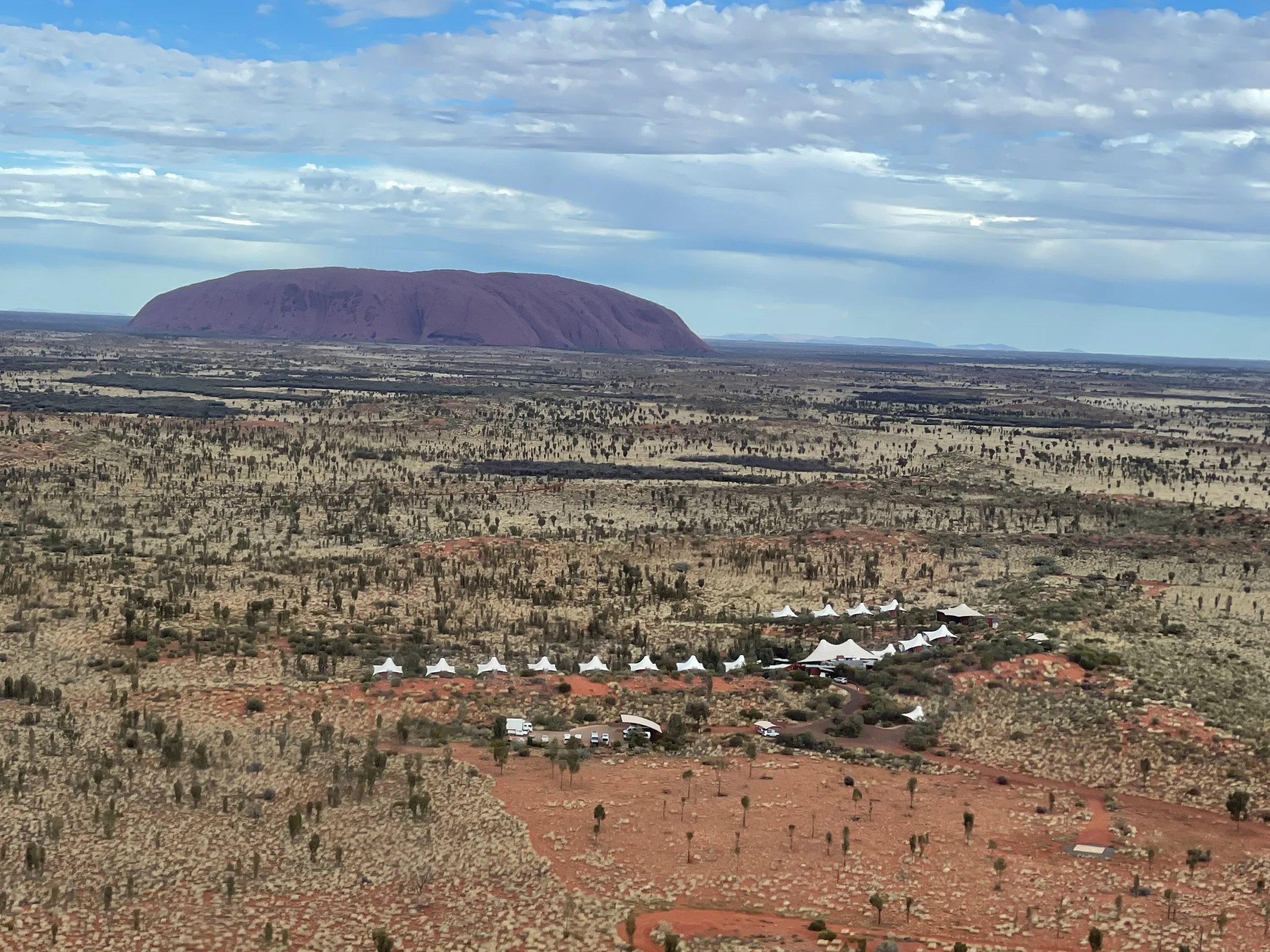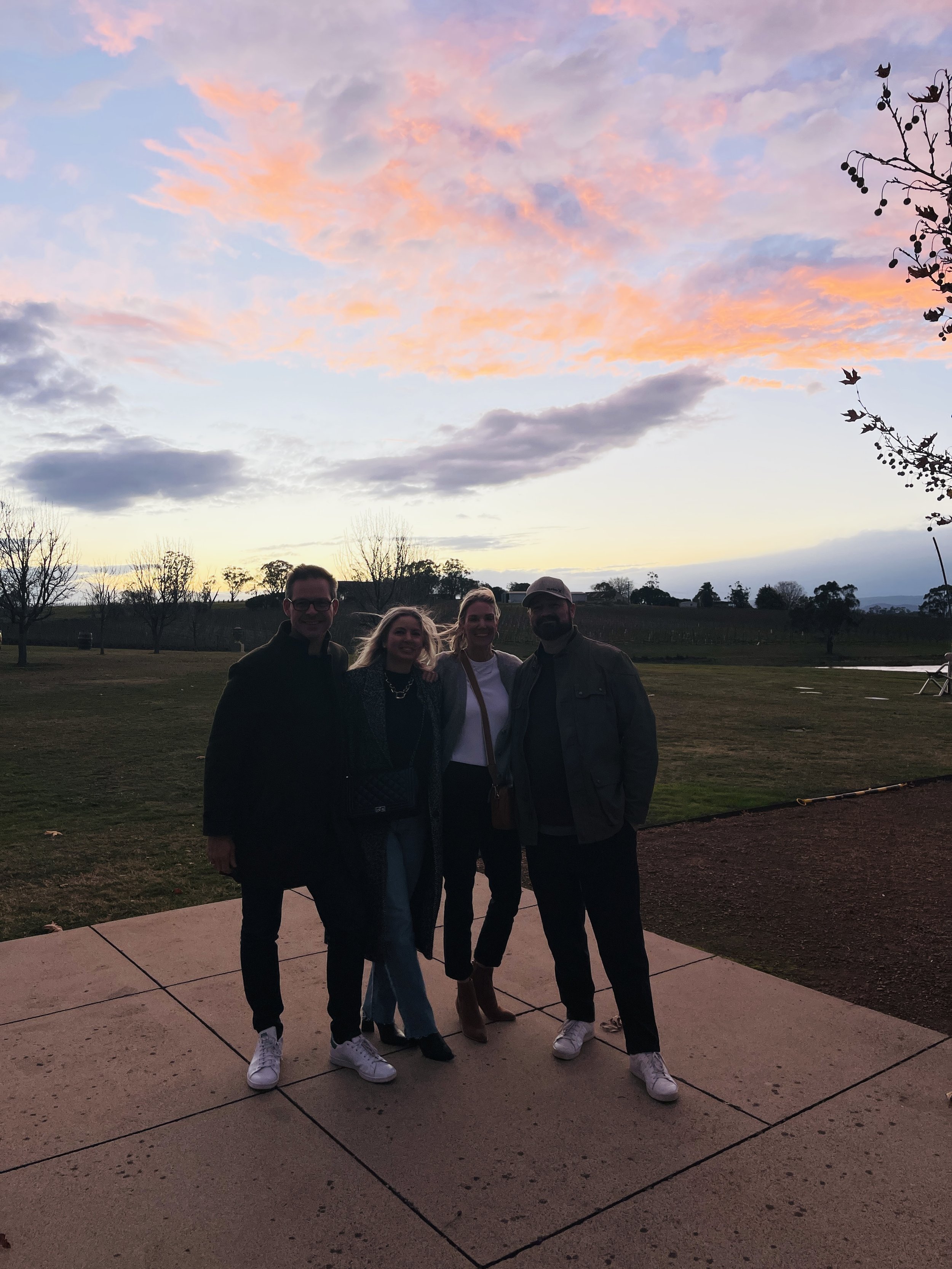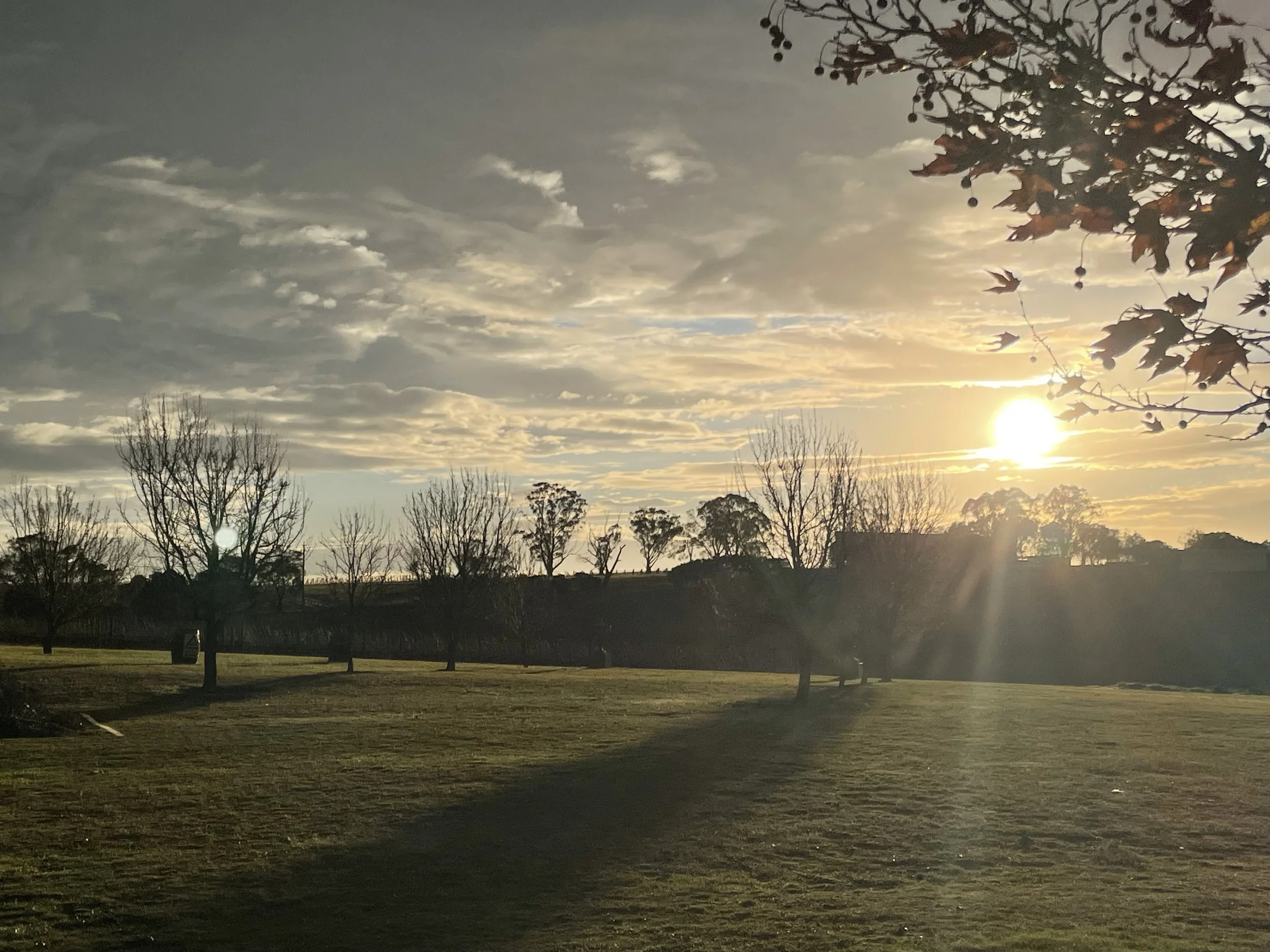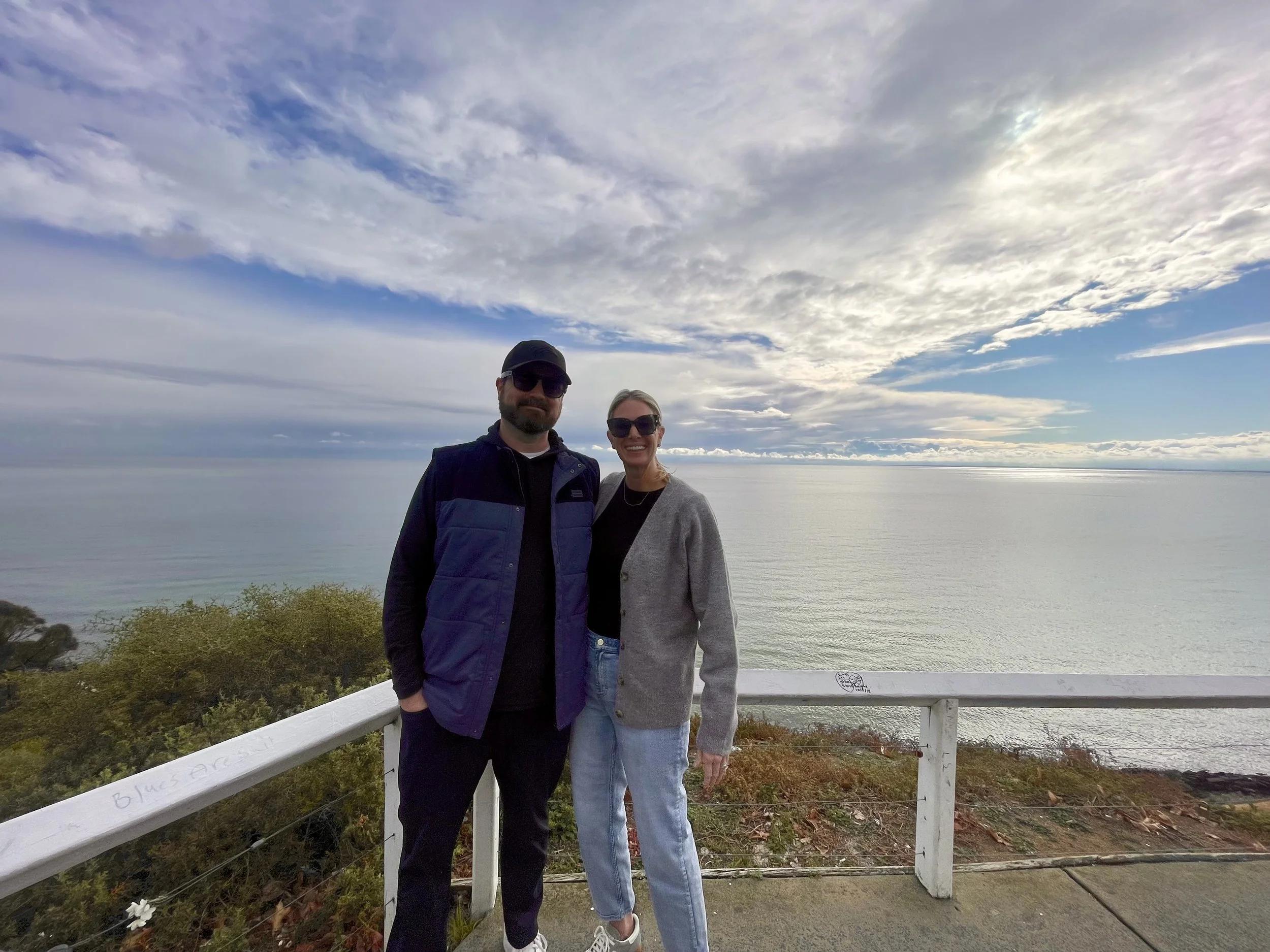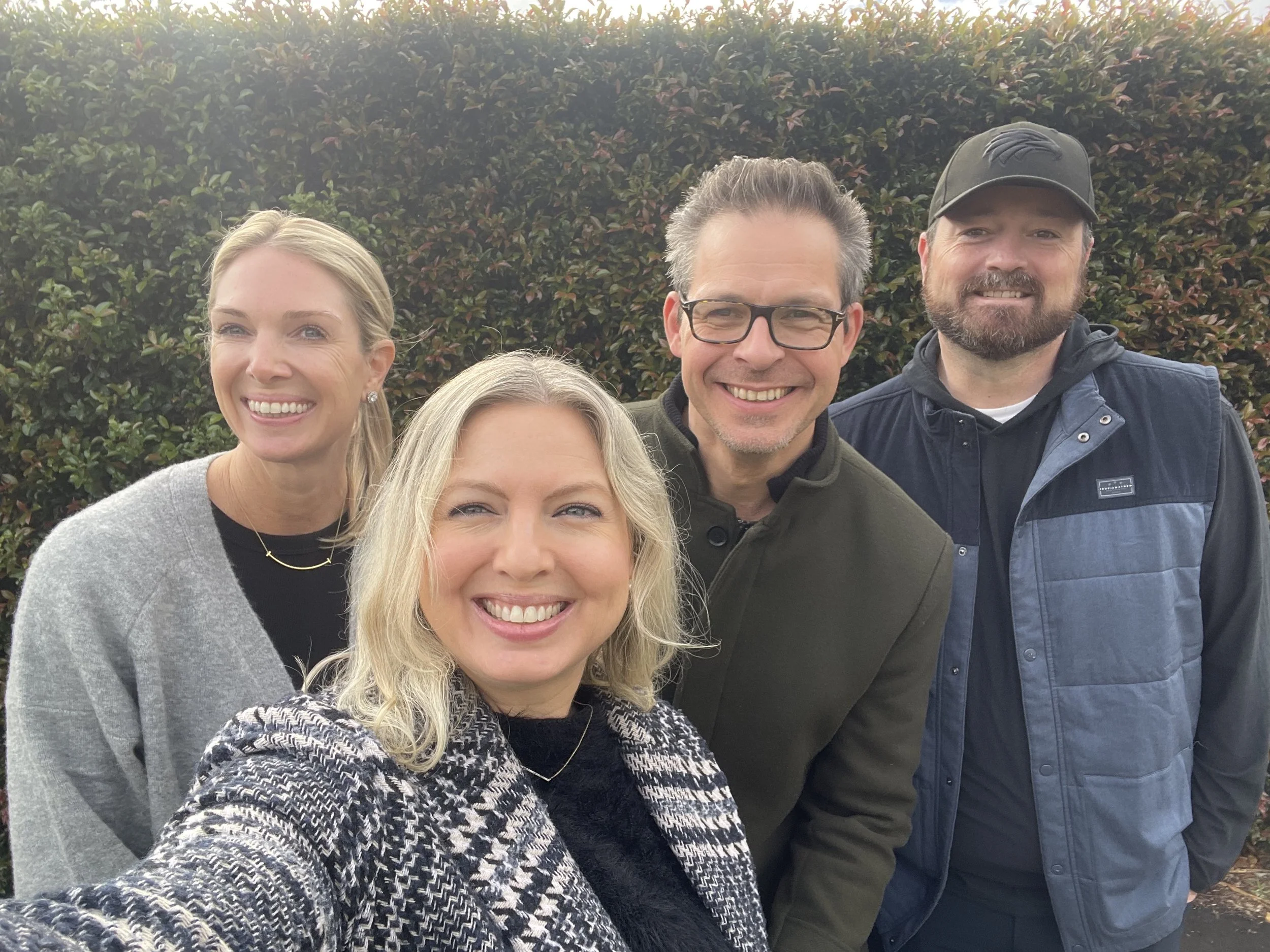Uluru, Kata Tjuta and Mebourne Wine Country
The title of this latest trip may be a bit confusing since these are two very different places and experiences. We bundled them out of pure convenience. There are no direct flights to Ayers Rock Airport from Perth, so we had to fly through Melbourne to get there and back, which also gave us the opportunity to spend some time in the Melbourne area with some friends who live close to some great winemaking areas!
Pro Tip: Australias pronounce Melbourne as Mel-bin, not Mel-bourne. There is no Jason Bourne in the name.
Uluru and Kata Tjuta
We aren’t “outdoorsy” people, but one thing we have learned about ourselves during these travels is that there are some natural wonders that leave you in awe, and changed. The Great Barrier Reef, the wester highlands of Scotland, Downpatrick Head in Ireland, the Atlas Mountains in Morocco are all such places. After our recent visit to Australia’s Red Center, Uluru and Kata Tjuta have rushed to the top of this list. Towering out of the desert, shaped by ancient winds and time, they pulse with spiritual energy, cultural depth, and unmatched natural beauty. We explored these inselbergs (Like an iceberg, but inland and made of rock instead of ice. We were educated that these are not technically monoliths because the rock continues for hundreds of meters under the surface.) learning about the science, history and the cultural significance of them from the amazing staff from Longitude 131°, the eco-lodge we stayed at because of its unmatched access to this World Heritage-listed landscape.
You can read more about the creation of Uluru here. It really is quite interesting!
Arrival
You see the bright red dirt as far as you can see, and as the plane approached Ayers Rock Airport, you see Uluru jutting out of the ground. A short 15-minute drive brought us to Longitude 131°, which seamlessly blends into the rugged terrain while offering guests an intimate experience with every comfort you could ask for. Perched atop one of the dunes, our unit (each room resembles a stand alone tent) we had unimpeded, direct views of Uluru, where we could watch it change colors from sunrise to sunset, often going from bright red, to orange, to yellow, to almost black in a matter of minutes.
View from inside our villa at Longitude 131.
One of the many, many reasons why Longitude 131° was worth every penny spent was that they curate a series of immersive signature experiences, giving us the opportunity to learn so much along the way, but more importantly we just showed up without having to plan a thing. Each experience was led by knowledgeable guides who shared the stories of the Anangu, the traditional custodians of the land. Here are some highlights:
Mala Walk & Kantju Gorge
Valerie and Jeremy at Uluru at sunset.
We joined a guided walk along the base of Uluru, tracing the story of the Mala people. Ancient rock art and sacred sites came alive through storytelling, culminating at Kantju Gorge, where the setting sun illuminated the vertical rock face in an ethereal golden hue. Jeremy took a set of pictures over the course of about 10 minutes and we noted that the color of the rock changed at least 5 times in the setting sunlight.
Uluru Base Walk
One of the most enriching experiences was walking the full base of Uluru, which is about 12 kilometers (almost 7 miles) around. This circumnavigation gave us a more intimate understanding of the rock’s scale, ecology, and sacred sites. It also gave Valerie the opportunity for one of her favorite traditions, wearing her wedding veil on our anniversary! She (the veil) came back with a little bit of a red hue from the dirt, but as always everyone got a kick out of it and we got some good photos of her (the veil) and Uluru.
Our guide led us through varied landscapes and along the way we paused to learn about the Anangu people’s creation stories, which are intimately tied to every curve and crevice of the rock. The interesting thing they shared with us was that the stories they were able to share with us were considered the Anangu’s children’s stories and parables, meant to teach lessons to the Anangu children through their traditional story telling practice. The agreement with the local people is that these few basic stories are allowed to be shared, but there are many, many other stories they have that they keep sacred and secret just for themselves. There are also large sections of the rock where you are not allowed, nor are you permitted, to take photos/video because of the spiritual and cultural significance.
Collage of our time at Uluru.
Uluru Sunset
One of the most moving moments was on the second evening, standing before Uluru as it glowed in the last moments of the sun going down, glass of bubbles in hand. Watching the rock change color with the setting sun was a humbling reminder of nature’s artistry.
Field of Light by Bruce Munro
As darkness fell, we were taken to the Field of Light installation, which features 50,000 glowing spheres spread across the desert floor, pulsating with gentle light in an ever-shifting rhythm. It felt otherworldly, like walking around some sort of glowing other world. Not what you might expect compared to all the other experiences you have around Uluru, but no less memorable.
Dining Under the Stars: Table 131°
A couple of our nights were spent at Table 131°, an open-air dining experience nestled among the dunes. With Uluru silhouetted in the distance and stars spilling across the sky, we enjoyed a four-course meal paired with amazing Australian wines. Each night for dinner, the chef baked a couple options for dinner rolls. They were mind blowing. Every night was different and better than the last. Yes….dinner rolls! So good, in fact, they have made the blog!
After dinner, a guide pointed out constellations in the southern sky, weaving tales from both Western astronomy and Aboriginal lore. The desert air was crisp, the wine warmed us, and the view of the stars was nothing short of magical.
Walpa Gorge & Kata Tjuta
A morning expedition took us to Kata Tjuta—meaning “many heads” in the local language. These domed rock formations were even more massive and mysterious up close. The walk through Walpa Gorge was serene, with towering walls on either side and a breeze wipping through the narrow passageway. A visit to the Cultural Centre followed, where exhibits deepened our understanding of the spiritual significance of the land.
Helicopter Flight
While each of the guided experiences brought us close to the land, nothing compared to seeing it from the sky. We opted for a 36-minute aerial journey over Uluru and Kata Tjuta. As the helicopter lifted off from the lodge’s helipad, the vastness of the outback really hits you.
Valerie and Jeremy going on a helicopter adventure!
Uluru from the helicopter.
Kata Tjuta from the helicopter.
View of our restort, Longitude 131, and Uluru from the helicopter.
From above, Uluru appeared even more commanding, rising abruptly from the desert floor. Its scale is hard to grasp until you have circled it from the air. While once allowed, you are no longer able to climb it, so this also gives you the opportunity to see the top of it.
Kata Tjuta, in contrast, resembled a cluster of enormous stone bubbles—each dome casting long shadows across the red plains. The highlight was flying over areas where tourists are not allowed to hike, and then seeing the Valley of the Winds where the landscape opened into dramatic amphitheaters and sun-splashed canyons. The helicopter flight was more than sightseeing; it was a moving meditation on time, nature, and our tiny place on this planet and in the universe.
Our visit to Uluru and Kata Tjuta was everything we had hoped it would be, and more. Beautiful, relaxing, amazing food and just an all around life-changing experience. If you’re considering a visit, don’t just go to take photos, be present and really take it all in.
Pro Tips for Your Journey:
June was the best time to visit: Winter (June–August) offers mild days and crisp nights, ideal for hiking and stargazing.
What to pack: Layers for temperature swings, walking shoes and sunscreen. There is very little downtime depending on how many days you stay, so comfort is key!
Heli flight worth it? Absolutely. Book early and go for something that is 30 minutes or longer. The time in the air goes by quick and there is a lot to take in.
Melbourne - The Yarra Valley and Mornington Peninsula Wine Regions
Markus, Leili, Valerie and Jeremy wine tasting in the Yarra Valley.
We have visited Melbourne in the past, and really enjoyed it, but didn’t originally have plans to head back there since there are so many other places in Australia that we want to see. But we reconnected with an old friend who lives near the city over the holidays who extended an open invitation to come stay with them. Since we were flying through Melbourne anyway, we chose to stop over for a few days to spend time with them. One of them works in the wine industry, so he offered to tour us all around the Yarra Valley and the Mornington Peninsula, two fantastic wine making regions about an hour outside of the city.
You will find yourself in a different world entirely—one of rolling hills, salty sea air, and glasses brimming with some of Australia's finest cool-climate wines. For wine lovers, the city is blessed with two distinct, world-class regions on its doorstep: the Yarra Valley and the Mornington Peninsula.
So, which way do you turn? East towards the valley's historic hills, or south towards the chic coastal breezes? Here’s a little taste of what awaits in each.
The Yarra Valley: A Classic Escape into Victoria's Wine History
Head east from Melbourne, and you'll find yourself in a different world entirely. One of rolling hills and vast landscapes of the Yarra Valley. This is Victoria's oldest wine region, and it carries an air of established elegance. The Yarra is celebrated for its classic power couple: chardonnay and pinot noir. The chardonnay here is sophisticated and complex, ranging from crisp, citrusy styles to richer, fuller-bodied expressions. The pinot noir is ethereal and perfumed, with delicate notes of cherry and spice.
Sunset over Dominique Portet
The drive itself is part of the experience, and when we arrived to the first winery, Domaine Chandon, we spotted a family of kangaroos grazing amongst the rows of vines, and we kind of knew that we were in for a special day. Chandon is the same company as the iconic one from France and is highly recommended for a bubbles fan. We had a bite to eat in the restaurant, which was also quite good! The panoramic views of the vineyards from our seats made for a lovely setting to relax and unwind. We also hit Dominique Portet, which made a wide range of tasty wines, but we took home a few bottles of the Single Vineyard Pinot Noir.
The Mornington Peninsula: Coastal Cool and Boutique Charm
The next day, we headed just 15 minutes south of where our friends live to the Mornington Peninsula, a beautiful strip of land where ocean breezes and rolling hills create an ideal climate for pinot noir and chardonnay.
Jeremy and Valerie looking out over Port Philip.
The vibe here compared to the Yarra Valley is much more relaxed and artsy. We went to one of the best pinot producers in the region, if not all of Australia, Mooruduc Estate. We lucked out that the night before was their vintage release party, so they had a number of older wines open and available to taste. The thing that stood out to each of the wineries we went to is not only the quality of the wines, but the silky texture of them, which gave them this soft elegance compared to the more structured wines from the Yarra.
Which to Choose?
Choosing between the Yarra Valley and the Mornington Peninsula is a delightful dilemma.
Go to the Yarra Valley for a taste of history, grand estates, and a classic introduction to Victoria's most famous grape varieties.
Head to the Mornington Peninsula for a chic coastal escape, boutique cellar doors, and wines with a distinct elegance.
Valerie, Leili, Markus and Jeremy. Food and wine friends from Melbourne.
For us, we preferred the wines from the Mornington Peninsula, but ultimately, you can't go wrong. Both regions offer a perfect escape from the city and a delicious insight into the world of Australian cool-climate wine. Our advice? Find time for both.
Spending quality time with friends, eating great food and drinking amazing wines was a perfect way to end this adventure. Again, Australia has so much to offer and experience. Both Uluru and Melbourne wine country are worth exploring when you visit Australia.
Cheers! Where to Next?!


